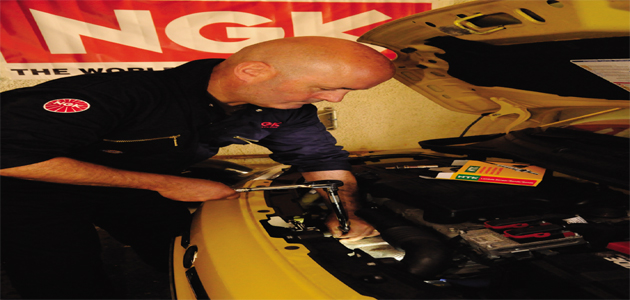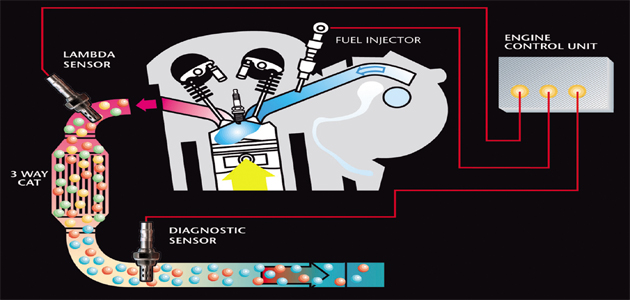

With the ever greater demand to reduce fuel consumption and to lower exhaust emission levels, it has become necessary to operate engines away from the stoichiometric fuelling point under certain conditions. An enriched air/fuel mixture (Lambda less than 1.0) may be required during a cold start and under full load conditions.
 These modes of engine operation are subject to continuous research into new strategies to reduce fuel consumption. Some more recent engine concepts are designed to work at an air/fuel ratio much leaner than stoichiometric, at least for part of their operation. These ‘lean burn’ engine strategies must be strictly and accurately controlled.
These modes of engine operation are subject to continuous research into new strategies to reduce fuel consumption. Some more recent engine concepts are designed to work at an air/fuel ratio much leaner than stoichiometric, at least for part of their operation. These ‘lean burn’ engine strategies must be strictly and accurately controlled.
For this purpose, ‘broadband’ oxygen sensors were developed. These sensors can accurately measure and produce an output signal which is proportional to a very wide range of air-fuel ratios. Fuelling can be maintained at any required air/fuel ratio and their operation is both extremely fast and accurate.
Broadband sensors are also used in modern diesel engines, which mostly operate with an excess air factor.
Method of operation
Broadband sensors consist of two cells: one measurement cell and one pump cell. With the help of the measurement cell, the oxygen concentration of the exhaust gas – which flows into the detection chamber – is measured and compared with that of a stoichiometric mixture.
As a stoichiometric value would generate a 450 mV output any deviation will cause the pump cell to transport oxygen ions into or, by reversing the current, out of the detection chamber in an attempt to regain the target value of 450 mV. Measurement of the value and direction of flow of this generated pump current enables precise calculation of the air/fuel ratio. At a stoichiometric air/fuel ratio there is no net current flow, as the residual oxygen concentration within the detection chamber is designed to produce 450 mV at this value.
Signal output
If a stoichiometric mixture is present (Lambda = 1.0), no current flows through the pump cell. If a rich mixture is present there is very little residual oxygen. A negative current is produced at the pump cell and oxygen is pumped into the detection chamber.
If a lean mixture is present there is more residual oxygen and a positive current is produced at the pump cell. Oxygen is pumped out of the detection chamber.

Cable assignment
NTK broadband Lambda sensors have five cable connections. The yellow and blue cables provide the heater power control. The pump signal current flows through the white cable; the measurement cell signal flows through the grey cable. The black cable provides the earth connection for both pump and measurement cells.









